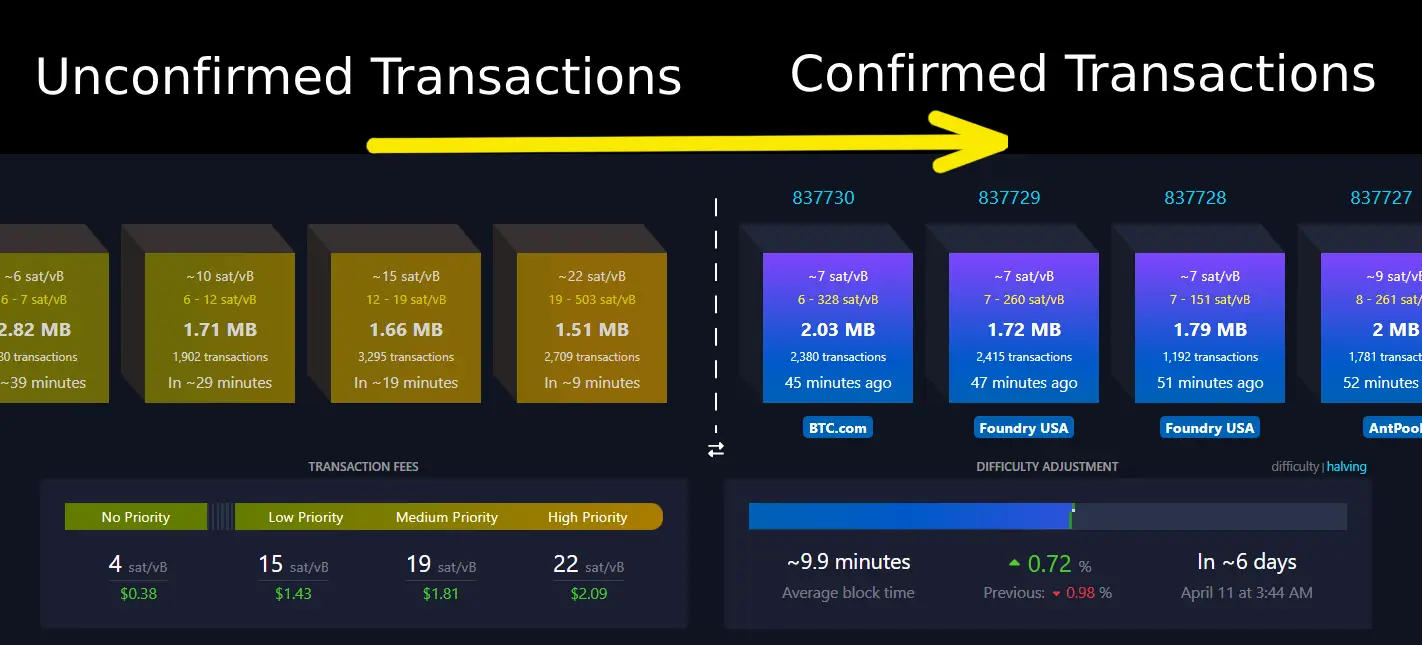What to Do When a Bitcoin or Litecoin Transaction Gets Stuck?
When a Bitcoin (BTC) or Litecoin (LTC) transaction gets stuck, it means it's not being confirmed by miners and added to a block on the blockchain, usually due to low transaction fees that was assigned when sending the transaction. Here are several steps you can take to resolve the issue:
Wait It Out
99% of the time, the best course of action is patience. If the blockchain network is congested, your transaction should eventually get confirmed when it clears up, though this could take from a few hours to several days. In rare cases, your transaction may be dropped by the cryptocurrency network, and you'll need to make your wallet rescan the blockchain. More on that later.
Increase the Fee (RBF - Replace By Fee)
If RBF option was enabled when sending the transaction, you could attempt to replace your original transaction with a new one that includes a higher fee. This signals to miners that confirming your new transaction is more lucrative. This is an advanced feature that may not be supported by your wallet app.
Crypto Transaction Accelerators
Some services claim to speed up transaction confirmations by submitting your transaction directly to mining pools. Be cautious and research thoroughly before using these services, as we do not recommend this.
Double-Spend with a Higher Fee
This is a last resort and involves sending the same amount of BTC or LTC (that is currently stuck) to the same address but with a higher fee. This is technically what RBF does, but if you didn't enable RBF, you might still be able to double-spend with some wallets. But you need to make sure the new transaction will cancel the old one, research this subject thoroughly before attempting.
Wait for the Mempool to Clear
The mempool is where all the unconfirmed transactions wait in a queue. If your transaction remains unconfirmed for a long time, it might eventually be dropped from the mempool, at which point you can resend it with a higher fee. This is more of a natural resolution process rather than an active solution.

Visualization of transaction processing from the Mempool to BTC blockchain
For monitoring the status of your transaction and its position in the mempool queue, use the following sites:
- For Litecoin: litecoinspace.org
- For Bitcoin: mempool.space
Simply enter your transaction ID (TXID) on these websites to get detailed information about your transaction's confirmation status and fee recommendations.
Dealing with Dropped Transactions
If your wallet says the transaction is "pending" but you can't find your transaction on litecoinspace.org or mempool.space, you are dealing with a transaction that has been dropped or rejected from the mempool. In that case, you need the wallet to realize the transaction didn't go through, by rescanning the blockchain, connecting it to a different node, or better yet, restoring your wallet on an Electrum-BTC or Electrum-LTC application.
Restore Your Wallet in Electrum
If you're facing an issue with stuck or dropped transaction in Bitcoin (BTC) or Litecoin (LTC) and need more control over the situation, restoring your existing wallet from a smartphone app to the Electrum-BTC or Electrum-LTC using the seed words can be a good strategy. Electrum self custody wallet offers advanced options for managing transactions, including the ability to increase the fee and double-spend, or detect any transactions that might have been dropped. These are advanced features not available in mainstream smartphone wallets.
Can FaceCheck.ID Help?
Since we don't have an access to your wallet and private keys, it's technically not possible for FaceCheck.ID to speed up or cancel your stuck crypto transaction. But rest assured that FaceCheck.ID is automatically monitoring the address for your payment. As soon as your transaction gets 3 confirmations on the blockchain, it will credit your account.
How to Resolve Stuck Transactions When You've Sent from an Exchange Wallet?
If you don't have full control over your wallet because the transaction was sent from an exchange or a hosted wallet without self-custody, you should first reach out to the support team of the service provider. They manage your wallet and often have specific policies or tools to address unconfirmed stuck transactions.
